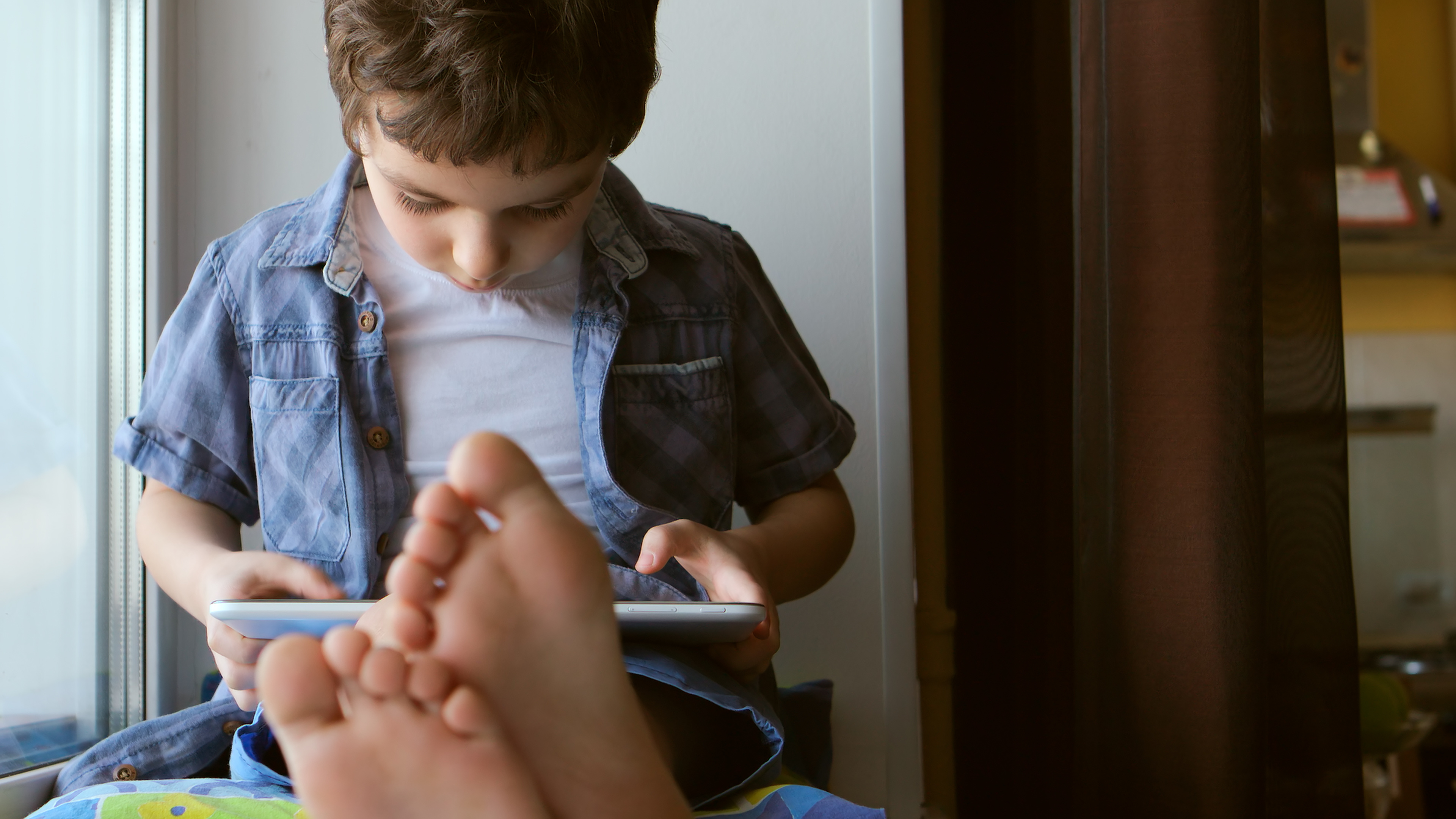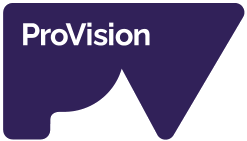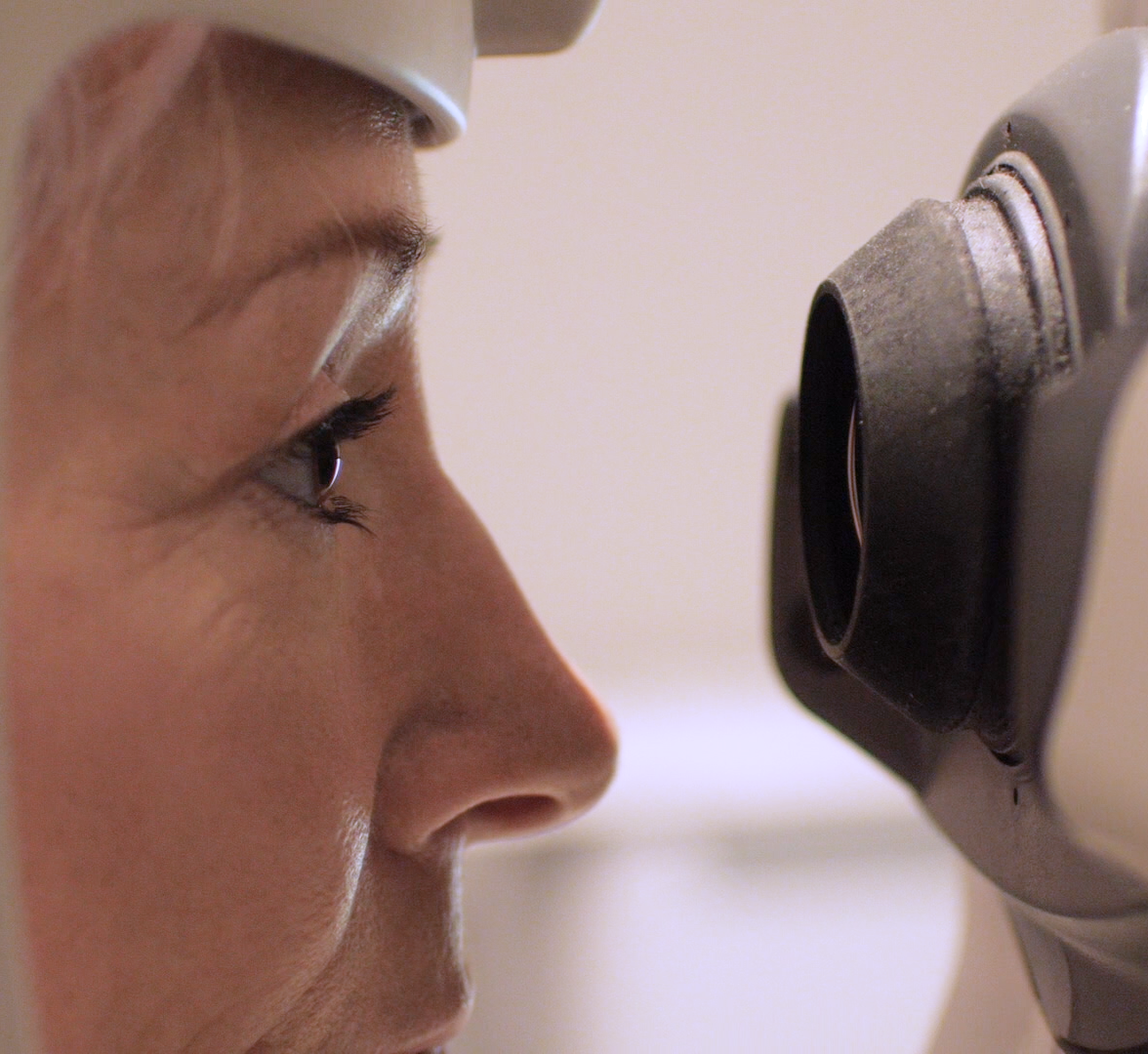
In the world we now live in, we are surrounded by digital devices.
Whether for educational purposes or just fun, children are spending a large portion of their time looking at the LED screens of computers, tablets, smartphones and other digital devices.
Not coincidentally, along with this increased screen time comes consequences. We are seeing more cases of digital eye strain – symptoms caused by staring at digital devices for prolonged periods, usually two hours or more.
There has been a dramatic shift in the way children are using their eyes.
According to ProVision independent optometrist and ProVision Professional Services Committee member, Norm Russo, the wider use of electronic devices such as computers, tablets and smart phones has lead to a big change in the way children are using their eyes. He highlighted that a causal link exists between time spent indoors, the reduced amount of time outside and the development of eye conditions such as digital eye strain, dry eyes, and myopia, or short-sightedness in children.
Norm has owned a large independent optometrist practice in Melbourne’s South East since 1986. He has qualified as a Fellow of the Australian College of Optometry.
We asked Norm what he is seeing in cases of digital eye strain in children and what the message is for children and parents.
What’s the youngest age you’ve seen a child presenting with visual problems related to screen use?
I’ve seen children as young as two are being given iPads to watch to help them to go to sleep. In one case, a two year old patient was borderline developing a squint or a turned eye. When she was tired and trying to focus on the screen, she was getting a turned eye. But many children of all ages are being given or have access to digital devices. They are staring at screens for prolonged periods and subsequently, the time spent outdoors decreases.
If you think about eyes, eyes love looking at things that are far away and moving.
Is the messaging from parents to ‘go outside and play’ even more important today?
Yes. Because generally we are really good at looking in daylight, at objects in the distance that are moving. We are fantastic at it, we don’t get tired, our eyes love it, our eyes think we are on holidays, and the messaging from parents to ‘go outside and play, it’s a beautiful day’ is even more important today, in this digital world. It is good for our eyes when we are outside and moving and we are looking around and playing.
We never have people say in a consultation, “when I finish walking the dog my eyes are tired and aching or I can’t focus, I’m exhausted, I just want to close my eyes, I can’t take it anymore.” This never happens. But they do say things like this when they have been using digital devices for prolonged periods without breaks.

We all say I'll break in 10 mins, okay maybe in 20 mins, definitely in 30, I'll take a break... The next thing we know we’ve been there for 2 hours and we didn’t even realise.
We get vision problems because we don’t take the breaks from being on these digital devices or watching these digital screens when we need to. We don’t look away from the device often enough. We don’t get outside enough. We don’t move as often. We are often looking at an artificial light source and staring at this internally illuminated LED device for too long, which is not really what eyes are designed to do.
What symptoms are you seeing kids present to the optometrist with?
Kids are presenting to optometrists with a range of visual problems related to screen use.
Their eyes love being relaxed and comfortable, such as when the child is moving and is placed at all different distances from an object. Eyes get tired and sore, and start to have problems when they’re being held at one distance for long periods without breaks. If they’re focusing at close targets, it requires a lot of muscle work. What happens with digital device use is, we get so absorbed in what we’re seeing. We forget that we are looking at something up close for so long. We’ve all had the experience of looking at our phone and flicking through social media and we can easily forget how long we have been staring at the screen up close. We know to take a break, but we put it off, and it becomes 20 mins, then 30 mins, and the next thing we know we’ve been there for two hours without realising.
I am seeing a dramatic increase in dry eye in children. I am also seeing more symptoms of eye strain such as fatigue of the eye, pain in the eye, focusing problems, headaches and myopia (short-sightedness).
What is myopia and are you seeing a rise in myopia because of increased screen use?
Myopia has become so common that by 2020, it is estimated that 2 billion people worldwide will have myopia, and by 2050, almost 50% of the world will be myopic. [1] That is five billion people.
Reducing the prevalence and impact of myopia is critical as myopia is associated with many eye health risks later in life, such as retinal detachments, glaucoma, and cataracts.
There are many causes of myopia. Genetics plays an important role but the environment in which the child evolves is a more important factor. What has changed in our environment to explain the recent myopia epidemic is the impact of technology, which has seen a boom in recent years, is being closely examined.
For example, a rapid increase in visual problems has been noted since the introduction of the smartphone in 2007. While the device itself does not emit harmful radiation, it requires the user to read its screen at a distance of 20 cm rather than the normal distance of 45 cm to 50 cm. It has been suggested that this close distance boosts the risk of developing myopia by eight times, especially if both parents are myopic.
The likelihood of developing myopia increases when one or both parents are myopic. To slow the progression of myopia and reduce long term eye health issues, myopia needs to be managed as early as possible.
Dry eye is generally seen as an adult condition. Are you seeing it more today in children?
Yes. Children don’t come in from playing soccer saying “gee Mum, my eyes are tired.” But if they’ve been staring at an iPad or a computer all day, they will likely be rubbing their eyes, or grinding their palms into their eyes, because their eyes are dry, and their eyes are tired.
We see these problems with anyone looking at screens for more than two hours straight. They get dry eyes, they get sore eyes, and their focusing starts to go. They have problems keeping their vision clear, they have problems refocusing to distance.
Can we actually forget how to blink?
If you’re in a park watching seagulls swooping around, as you’re watching the birds, every time your eyes move from one position to another you do a blink. You can’t help it, it’s automatic. If you look from one side of the room to another, you’ll blink on the way through. It’s almost impossible to move your eyes without blinking.
But if you stare at a screen, you will begin to slightly retract your lids and you begin to blink as a little flutter rather than a complete blink. What starts to happen, because you’re not doing that complete blink, is the oil glands in your eyelid aren’t getting pumped by that normal muscle movement.
In a complete blink, you actually pump the oil glands in your eye lid and produce a layer of oil that coats your eyeball and prevents evaporation of your tear film. When you are staring at the computer screen you are suppressing your blinks and when you do blink you do a little flutter and you don’t do a complete blink. Then you open your eyelid again and keep staring. What happens is people start to notice that their eyes get dry and tired. And then they begin to rub and grind their eyes to try and pump those oil glands. If you do this enough, what can happen is, because the oil glands are not working normally, the oil doesn’t move through the glands fast enough and it actually starts to dry and you start to develop a chronic dry eye condition which in the best case is just some lubricant drops, but in the worst case, we may need to stimulate the glands to restart producing oil because they just switch off. We do that by prescribing hot compresses, and to wear heated goggles to warm those glands and we’ve got special forceps to actually manipulate the glands to unplug them because they’ve become plugged and dry.
Have a look at your colleagues at work, and look at someone who is really concentrating on a screen and look at their blink pattern.
How can we be preventative when it comes to digital eye strain?
As an optometrist, I am educating people to:
- Consider a comprehensive eye examination – by getting a checkup you can find a problem if one exists because kids will often not complain about things that they feel is normal. This is because they don’t know any different.
- Look away from digital devices often. Move your eyes from side-to-side.
- When you do blink, blink fully, rather than little flutters.
- Get outside at lunchtime, break times and weekends.
- Consider specific purpose lenses and anti- glare coating.
Set your devices to the night time setting, which is the blue filter setting, at the very least this will reduce glare.
Again, get outside, daylight and movement are the best things to reduce eyestrain.
Will a comprehensive eye examination necessarily mean a new pair of glasses?
Often a comprehensive eye examination will result in good advice, not necessarily a new pair of glasses. A child may need a pair of glasses but they often won’t. A key component of an examination is about asking questions about habits and hobbies to get an understanding of how a child is using their eyes. An examination can often be a key opportunity to highlight behaviours that are affecting the quality of vision and to educate now to change the behaviour before it is too late. Key messages will be:
- Outdoor play is the best thing for reducing digital eye strain.
- Movement and play is a really important thing for vision development
- The 20-20-20 rule – taking a 20 second break from screens every 20 minutes and look at an object 20 feet away (6 metres approx.) for around 20 seconds.
What is your message to parents reading this?
- Get their eyes checked to make sure that they are coping.
- If you can set their devices to the night time setting, which is the blue filter setting, at the very least to reduce glare.
- Get kids outside as much as possible. Daylight and movement are the best things to reduce eyestrain.
- There is a causal link between time spent indoors at near, and the reduced amount of time outside and the development of myopia in children – short sightedness. We now know that children who spend more time outside are less myopic. We know that is a fact.
- Avoid allowing children to watch streaming video on a small device if possible.
- Monitor the amount of time that children are spending watching devices up close, because for all of us, it is much longer than we think.
Are there specific lenses for computer work?
The muscles that allow our eyes to focus up close get very tired with prolonged computer work. We’ll often prescribe glasses that are specific to the computer screen position. We also might need prescribed reading glasses. The power of the lens will be positioned higher on the frame so that you’re not having to manipulate your neck to get to that part of the lens. These are specific purpose computer lenses to suit the screen that you use.
If you’re using a smart phone, there are a lot of different sorts of anti-fatigue or multi-focal lenses that will work quite well. But if you’re using a computer, and these days people will often be using multiple screens or they’ll be using the new type of swept curved really huge screens where they’ve got to look to different positions on the screen, specific purpose computer lenses may be required to be able to do that efficiently.
What does anti-glare coating do for the eye?
Specific purpose computer lenses will include an anti-glare coating that filters not just the ultra violet light but some of the visible violet light. The colour spectrum is violet, indigo, blue, green, yellow, orange, red. And just past violet is ultra violet which we can’t see. But visible violet actually causes quite a bit of glare and fatigue and so by removing violet from our vision we are reducing the glare that the screen causes which helps reduce fatigue.
Most primary school kids will have access to an iPad or a laptop all the way through school. By the time they get to high school they’ve got an iPad and or a laptop plus a phone and if you are looking at year 8’s and year 9’s, they are watching streaming video to a handheld device, whether that’s a phone, a laptop, or an iPad. And they can often do this for long periods, for example watching 5 episodes at a time in their bedroom, often in the dark.
In young Australians, research shows screen time increases with age. According to recent studies, more than half of preschool children are regularly doing online activity. As many as 80% of teenagers may experience eye conditions such as eye strain including dry, tired eyes after using digital devices for more than two hours straight. 18 year olds use digital devices on average 7.5 hours per day.
Norm Russo
Optometrist B.ScOptom, FACO, FACBO
Norm graduated from University of Melbourne in 1984. He has always worked in private practice and since 1986 has managed his own large independent practice in South East Melbourne. He has also done extensive study to complete the University of New South Wales Masters Unit in Behavioural Optometry and the Fellowship of the Australasian College of Behavioural Optometrists.
Since 2010 Norm has been involved in the Sumba Eye Program. This overseas Aide program sees a team of eyecare professional’s travel to the Indonesian Island of Sumba. They provide much needed eyecare including glasses and surgery.

